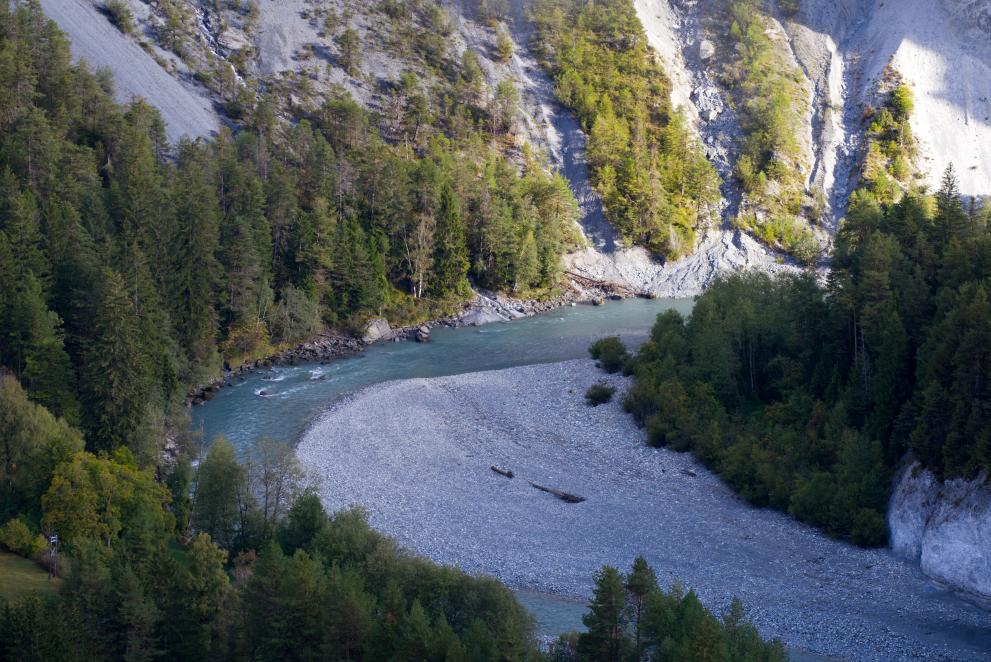
Four of Europe’s major rivers – the Rhine, Rhône, Danube, and Po – originate in the Alps. A range of weather-related processes determine the water levels provided by these mountain catchments. Global climate change is expected to alter weather patterns in this region, leading to changes in the frequency and type of drought events affecting these watersheds.
Droughts are generally classified according to three variables – duration (length of drought event), minimum flow (lowest water level reached), and deficit (difference between observed water flow and expected flow over the whole period). The impact of droughts on different water-dependent activities depends on these and other factors; for instance, hydropower is particularly sensitive to water deficit, whereas water transportation is more seriously affected by minimum flow. These factors are heavily influenced by the cause of the drought, such as whether it is due to low rainfall, reduced snowmelt, or a cold snow season.
This study examined changes in the causes of droughts in the central Alps between 1970 and 2017. The researchers used streamflow data from 827 water catchment areas, provided by national and regional authorities in Austria, France, Germany and Switzerland, to identify drought periods of at least 30 days. They cross-referenced this with meteorological data from the European Centre for Medium-Range Weather Forecasts to classify the events into eight standardised categories (drought types) according to the cause. They further grouped these as either rainfall-driven or snow/glacier-driven types. Then they analysed the frequency of the different drought types according to the elevation of the catchment for two periods: 1970–1993 and 1994–2017.
The researchers say that higher-elevation catchments (over 1 500 metres above sea level) were more likely to experience snow-driven droughts, whereas rainfall-driven droughts were more common at lower elevations. They report that reduced snowmelt (occurring over spring and summer) caused a higher proportion of droughts at higher-elevation catchments in the later time period (1994–2017). Average water deficits increased in this period, they say, but with shorter average duration and higher average minimum flow. These are characteristics typical of reduced snowmelt droughts.
The researchers argue that this finding is consistent with higher snowlines and lower snow depths observed in recent decades, factors associated with climate change. They suggest that these trends are likely to continue as the winter snowpack shrinks further. They also report changing patterns of drought type and characteristics in lower-altitude catchments, although these were weaker and more complex.
The researchers note that alongside changing weather patterns, water flows in the region may be significantly affected by human activities such as abstraction of groundwater or management of reservoir levels. They argue that all these changes could have consequences for drought management, especially predictability and seasonality of drought events, and for other activities including hydropower energy production. They recommend that simulation studies are conducted to anticipate the likely direction and magnitude of these changes.
Source:
Brunner, M. I., Götte, J., Schlemper, C., and Van Loon, A. F. (2023) Hydrological drought generation processes and severity are changing in the Alps. Geophysical Research Letters 50 (2): e2022GL101776. Available from: https://doi.org/10.1029/2022GL101776
To cite this article/service:
“Science for Environment Policy”: European Commission DG Environment News Alert Service, edited by the Science Communication Unit, The University of the West of England, Bristol.
Notes on content:
The contents and views included in Science for Environment Policy are based on independent, peer reviewed research and do not necessarily reflect the position of the European Commission. Please note that this article is a summary of only one study. Other studies may come to other conclusions.
Details
- Publication date
- 27 June 2023
- Author
- Directorate-General for Environment

